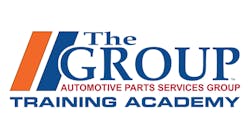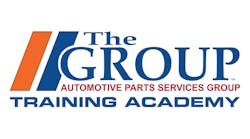Learn to Assess, Diagnose and Repair CAN-based Electrical Problems
Here’s a wild fact: most modern cars house over one mile of copper wiring within, and many house as many as four miles of snaking rivers of copper connective tissue. Gone are the days of popping the hood and being able to see your feet underneath the engine block. Gone, in other words, are easy fixes.
Today’s manufacturers are doing what they can to reduce this load and ease the burden on technicians.
“It’s not uncommon for cars to have 60+ modules these days,” says John Forro at Auto Video Innovations (AVI). “In the late eighties, we started putting extra computers on the car—body computers, engine and transmission computers. And they all emit and receive signals from other modules and inputs on the car.”
To counter this, manufacturers developed computer area network systems (CANs). What CANs do is simple: instead of every module speaking to every other module all the time—jamming those copper highways—the CAN acts as both control tower and interpreter, intercepting signals from all the modules and sending them on the shortest/most accurate path from module to module, simplifying the signal and reducing overall network traffic.
“The OEMs needed to create a network system and a module that acts as a master that gets the input and shares it with other computers on a twisted pair of wires,” Forro says, “and that’s the communication line. The comm line constantly sends signals, from the time you turn the key on from about 10 minutes after you turn the car off, to all different modules on the network.”
It’s simple in theory, but interpreting the on/off data from each module on a digital readout is far from it. And the volume of technicians able to readily do so is shrinking.
“I tip my hat to anyone trying to become a mechanic because an old guy like me has been doing this for 40+ years; I’ve been able to see the changes as they come,” Forro says.
“I didn’t have to learn everything anew—they were part of my career and education and I learned them one step at a time. A new person in the industry has to know everything, and you can’t teach 40+ years in a short time.”
Forro says that due to the sheer volume of modules operating at the same time within a vehicle, the communication line can easily be overwhelmed. Imagine walking into a room with that many people talking—how do you pay attention? How do you possibly have any context? That’s the dilemma today’s new technicians face when learning how to properly assess and diagnose today’s complicated vehicles. It’s more an art than a science.
Learn to Work from the Top Down
“The first thing a technician has to do is start with the scan tool and try to identify the issue,” Forro says, laying bare the process.
“Then they have to diagnose the circuitry in order to discover the root of the problem. In the past, we unplugged modules—if we can’t communicate with two or three main modules on the network, then the lesser ones won’t work either. So we unplugged the modules to see when the problem went away according to the readout, and if we took the bad modules out of the circuitry, then the rest would usually start working.”
The problem, of course, is that the modules aren’t bundled together in a neat little box near the engine marked Critical Modules - Fix Problems Here!
“They’re all over the vehicle,” Forro says, “and it gets really complicated because these modules and information packets have the ability to help us diagnose the vehicle if we can only interpret them. But once the mains stop working, it’s a hit-and-miss process to work backwards and identify the problem.”
And with the exception of extremely talented (and in today’s world, often older) technicians, no one else has the ability to diagnose and repair these vehicles.
The Future is (Even More) Wired & Complicated
Forro says that despite this knowledge, the modern vehicle is still growing more complicated, not less so. Electric vehicles are even more complicated, he says, much more dependent upon dozens more modules than traditionally fueled vehicles.
“If technicians don’t know the basic parts and fixes, they won’t be able to track down the actual root of the problem,” he says.
He uses anti-lock brakes as an example. ABS systems are old, and if they’d never been developed, then subsequence technologies such as traction control, self-parking vehicles, high-voltage vehicles that can charge the battery when slowed, and autonomous or self-driving vehicles would never have come along. He’s had the benefit of growing with the technology, but new technicians eager to learn have quite a mountain to climb.
“So it’s important to keep abreast of these changes because the manufacturers build something, release it, and it performs its primary function, but in ten years it’ll be the most basic step,” he says.
Thankfully, there are phenomenal resources out there to help new technicians learn, seasoned ones adapt and the industry to push forward through the technological wave washing over right now. The Group Training Academy offers classes such as these to help diagnose today’s cars for a better future tomorrow—for all of us.
To learn more, check out thegrouptrainingacademy.com and the latest CAN class, Advancing Your Networking Diagnostic Skills - Part 1.



